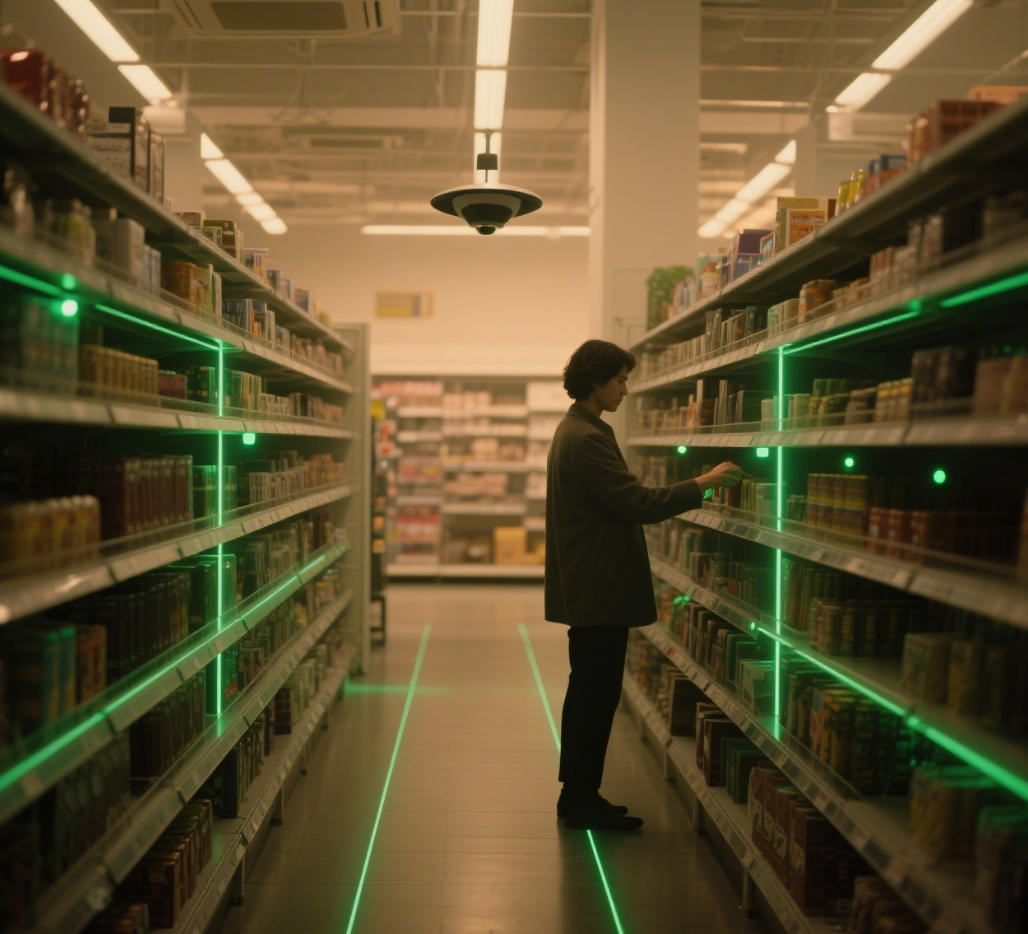Unmanned retail stores—sometimes called automated shops or cashier-less stores—are becoming a new trend in urban commerce. Customers enjoy a seamless shopping experience, entering with a mobile app, selecting goods, and leaving without traditional checkout. But how can these stores ensure accurate customer analytics, theft prevention, and energy efficiency without compromising privacy?
One of the most promising answers is millimeter-wave (mmWave) radar technology. By leveraging high-frequency radar sensors, unmanned retail stores can achieve non-intrusive monitoring, environmental adaptability, and strong privacy protection—advantages that traditional camera-based systems cannot always guarantee.
Why Is mmWave Radar Ideal for Unmanned Retail Stores?
Unlike cameras, which depend on light and raise privacy concerns, mmWave radar sensors operate based on electromagnetic waves in the 24 GHz or 77–81 GHz spectrum. These sensors detect object movement, human presence, and activity patterns without capturing images or personal identities. This makes them particularly suited for retail environments where customer trust and compliance with data protection regulations (such as GDPR) are critical.
More importantly, mmWave radar works in low-light, crowded, or obstructed environments, making it reliable for underground or night-time store operations where camera visibility may drop.
Key Applications of mmWave Radar in Smart Retail
1. Customer Flow Analysis
Accurate traffic analysis is crucial for understanding peak hours, optimizing product placement, and adjusting staff schedules in semi-automated shops. mmWave radar can detect the number of people in different zones of the store and track movement flows without invading privacy.
For example, a Linpowave V300 compact radar module can monitor wide areas with centimeter-level precision, helping store operators gain real-time insights into customer behavior.
2. Anti-Theft and Security Monitoring
Shoplifting prevention is one of the biggest challenges for unmanned stores. Traditional surveillance cameras often raise false alarms due to occlusion or poor lighting. mmWave radar, however, can recognize abnormal movement patterns such as lingering in restricted areas, sudden rushes, or unusual bag lifting gestures, which may indicate suspicious activity.
By integrating radar data with AI-based event detection, security systems can trigger alerts only when necessary, reducing false positives and cutting operational costs.
3. Energy Efficiency and Smart HVAC Control
In many cashier-less shops, lighting and HVAC (Heating, Ventilation, Air Conditioning) run continuously, leading to high electricity bills. mmWave radar sensors can precisely detect real-time occupancy, allowing the system to automatically adjust lighting and air conditioning.
For example, when no customers are detected in certain zones, lights can dim or switch off, reducing unnecessary energy consumption. This directly contributes to the store’s sustainability goals while lowering operational expenses.
4. Privacy-Preserving Monitoring
Unlike facial recognition cameras, mmWave radar does not record identifiable information. Instead, it outputs abstract point-cloud or heatmap data. This ensures that customers enjoy a sense of security knowing they are not being visually monitored.
In regions with strict privacy regulations, such as the EU, this capability helps unmanned retail stores stay legally compliant while still benefiting from real-time monitoring.
Integration with AI and IoT Platforms
mmWave radar becomes even more powerful when combined with AI-based analytics and IoT systems. For example:
-
AI-driven behavioral analysis: Detecting abnormal shopping behavior patterns.
-
IoT connectivity: Connecting radar sensors with store management systems for real-time decision-making.
-
Cloud data insights: Long-term trend analysis for marketing and logistics optimization.
This integration makes mmWave radar not only a monitoring tool but also a strategic enabler of business intelligence in automated retail.
Comparison with Alternative Technologies
-
Cameras: High detail but privacy risk, lighting dependency, and higher data storage needs.
-
Infrared sensors: Good for detecting presence, but limited range and accuracy in crowded environments.
-
mmWave radar: Works in all light conditions, immune to visual occlusion, high accuracy, and strong privacy protection.
This makes mmWave radar a balanced and future-proof solution for unmanned store operators.
FAQ: mmWave Radar in Unmanned Retail Stores
Q1: Can mmWave radar completely replace cameras?
Not entirely. Cameras are still useful for product recognition and visual confirmation, but mmWave radar complements them by providing reliable detection and privacy-preserving monitoring.
Q2: How accurate is mmWave radar in detecting people?
Linpowave’s radar sensors, for example, can detect presence with centimeter-level accuracy within 0.4–50 meters, making them suitable for both small and medium-sized stores.
Q3: Does radar monitoring affect health?
No. According to FCC regulations, mmWave radar emissions are safe for human exposure and operate well within international standards.
Q4: Can mmWave radar reduce store operating costs?
Yes. By optimizing energy use, reducing false alarms, and minimizing staffing needs, radar-based monitoring can significantly lower operational expenses.
Conclusion
Unmanned retail is not just about removing cashiers—it’s about creating a seamless, secure, and efficient shopping ecosystem. mmWave radar technology addresses the core challenges of customer analytics, theft prevention, energy management, and privacy protection.
As more retailers adopt automated store models, radar-enabled sensing will become a cornerstone technology, ensuring that unmanned retail can scale safely, sustainably, and in compliance with privacy laws.
To explore advanced radar solutions for retail and beyond, visit Linpowave’s official website.



